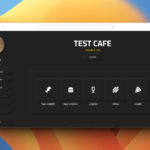Introduction
The world of programming offers a plethora of languages to choose from, each with its own strengths and applications. Whether you’re looking to build websites, develop mobile apps, or delve into data science, selecting the right programming language is crucial to your success. In this post, we’ll explore the benefits of various programming languages and provide guidance on how to choose the best one for your specific goals.
The Benefits of Different Programming Languages
1. Python
- Ease of Learning: Python’s simple syntax and readability make it an excellent choice for beginners.
- Versatility: Widely used in web development, data science, artificial intelligence, and more.
- Large Community: Strong community support with extensive libraries and frameworks.
2. JavaScript
- Web Development: The backbone of front-end web development; essential for creating interactive websites.
- Full-Stack Development: With Node.js, JavaScript can be used for both front-end and back-end development.
- Popularity: One of the most popular languages with a vast ecosystem of tools and resources.
3. Java
- Platform Independence: “Write once, run anywhere” capability makes Java ideal for cross-platform applications.
- Enterprise Applications: Commonly used in large-scale enterprise environments.
- Android Development: The primary language for developing Android apps.
4. C++
- Performance: Offers high performance and fine control over system resources.
- Systems Programming: Widely used in developing operating systems, game engines, and real-time systems.
- Legacy Systems: Many legacy systems and applications are built with C++.
5. Ruby
- Simplicity: Known for its elegant syntax, making it easy to write and read.
- Web Development: Popularized by the Ruby on Rails framework, which simplifies web application development.
- Productivity: Emphasizes convention over configuration, reducing development time.
6. Swift
- iOS Development: The preferred language for developing iOS and macOS applications.
- Safety and Performance: Designed to be safe and efficient, with modern language features.
- Interoperability: Can work alongside Objective-C, allowing gradual migration of codebases.
How to Choose the Right Programming Language
1. Identify Your Goals
- Web Development: Consider JavaScript, Python, or Ruby.
- Mobile App Development: Look into Swift for iOS or Java for Android.
- Data Science and AI: Python is a strong choice due to its extensive libraries and community support.
- Game Development: C++ is commonly used for its performance capabilities.
- Systems Programming: C++ or Rust for low-level programming.
2. Consider Job Market and Demand
- Research Job Listings: Look at job postings in your desired field to see which languages are most in demand.
- Industry Trends: Stay updated on industry trends to ensure your skills remain relevant.
3. Evaluate Learning Resources
- Courses and Tutorials: Choose a language with abundant learning resources, such as online courses, tutorials, and books.
- Community Support: A strong community can provide support and resources as you learn.
4. Think About Long-Term Goals
- Versatility: If you want a language that can be used in multiple domains, Python or JavaScript are good choices.
- Specialization: If you have a specific niche in mind, choose a language that excels in that area.
Conclusion
Choosing the right programming language is a critical step in your programming journey. By understanding the benefits of each language and aligning them with your goals, you can make an informed decision that sets you up for success. Remember, the best language for you is the one that aligns with your interests, career aspirations, and the type of projects you want to work on.
Call to Action
Are you ready to start your programming journey? Explore our recommended resources and start learning today. If you have any questions or need further guidance, feel free to leave a comment below. Happy coding!

